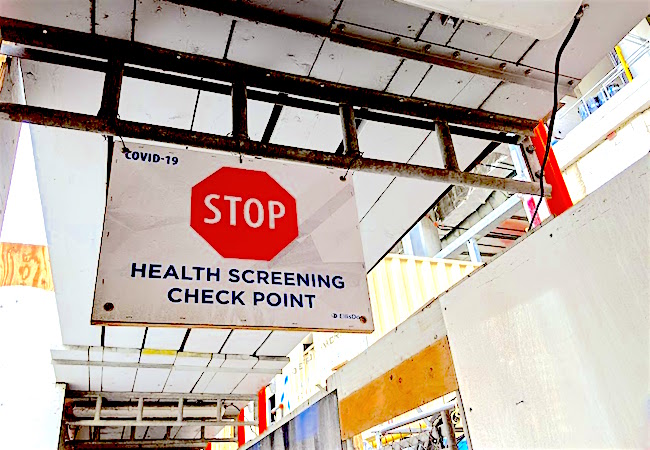
Widening vaccine rollout leads to questions about mandatory proof of vaccine policies
By David Kennedy
Health & Safety Risk Management
Site screening has been standard procedure on job sites for the past year. Employers could soon be looking to proof of vaccine policies as well, but numerous question marks remain
After a slow start, the vaccine rollout in Canada has started to hit its stride. The number of doses administered has regularly hit fresh daily records this month, and with more supply available, half of Canadians had received at least their first dose by May 22. Health authorities opening clinics to all ages mean millions more will follow heading into summer, along with second doses for those already with one jab.
Though the job is ostensibly well over a quarter done, fully vaccinating the second half of Canadians will be far tougher than the first — and construction employers have a considerable stake in the outcome.
So far, immunizers have been dealing with willing, often downright eager, patients. There are still millions of keen clients to stick, but the pool is shrinking. According to a Statistics Canada survey carried out in the final four months of 2020, 76.9 per cent of Canadians 12 and older are somewhat or very willing to get a COVID-19 vaccine. The challenge shortly will be convincing as many of the remaining 23.1 per cent as possible. In this respect, Canadian health authorities have done themselves and the general public few favours. Inconsistent messaging, best demonstrated by the country’s on-again, off-again relationship with the Oxford/AstraZeneca vaccine, has only added to the challenge of convincing hesitant portions of the population that the vaccines are safe and worth getting.
For the time being in construction, major employers are encouraging vaccines, but not mandating workers get them. As in other industries, it remains unclear if such policies will be necessary, or enforceable, but with the pool of unvaccinated Canadians shrinking, we’re likely to find out sooner rather than later.
In a webinar earlier this month hosted by the Ontario General Contractors Association, Norm Keith, a partner at Fasken LLP, said the issue centres on an employer’s legal duty to take “every precaution reasonable” to protect workers.
“What happens if you just cross your fingers, don’t have a policy, don’t manage this issue well and somebody gets sick, when you could have required them to be vaccinated or otherwise comply with public health, masking, physical distancing and other issues? Well you’re going to be prosecuted by the Ministry of Labour,” he said, speaking specifically about Ontario and its Occupational Health and Safety Act.
Keith said that it’s currently premature to implement a mandatory proof of vaccine policy, mainly due to supply problems and emergency use provisions, but said contractors need to be watching the issue closely in the months ahead and open a dialogue with workers, unions and outliers, such as anti-vaxxers, to lay the groundwork.
“In time, you have to move to that or you will be forever paralyzed and forever in the pandemic from your work practices, your additional costs, the fear and the anxiety that all of this pandemic has driven,” he said.
In the long run, Keith is confident employers will be able to put mandatory proof of vaccine policies in place, but acknowledges this has not been confirmed in any case law and that many of his legal colleagues are not nearly as convinced. Human rights law and privacy rules are a couple of the obstacles, though for Keith, proof of vaccine policies will be considered reasonable given the risk posed by COVID-19.
In the coming months, as Canadian vaccination clinics begin to run out of eager patients and the percentage of vaccinated people plateaus, employers will be forced to mull what exactly taking “every precaution reasonable” to protect their workforce means.
The full webinar, Guidance for Construction and Establishing Your Workplace Vaccine Policy, is available here.
This column will appear in the June 2021 edition of On-Site.




